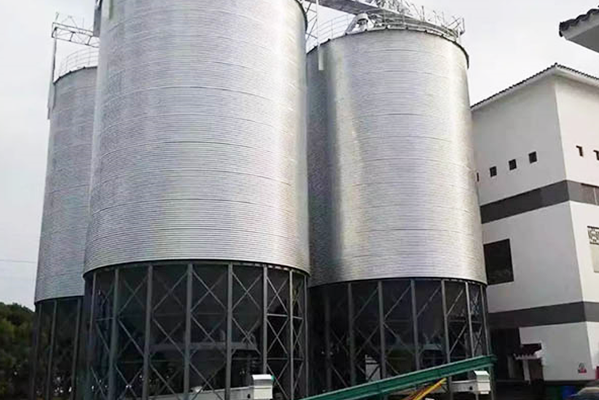Navigation Menu
Contact Us
- Email:
- info@wxavatar.com
- Address:
- Yurong Village, Yuqi Street, Huishan District, Wuxi, China.
Release Date:Mar 15, 2025 Visit:54 Source:Roll Forming Machine Factory
Grain storage is a critical aspect of agriculture, ensuring that harvested crops are preserved for future use, whether for consumption, processing, or trade. Effective grain storage prevents spoilage, minimizes losses, and maintains the quality of grains over time. To achieve these goals, a variety of methods and tools are used, ranging from traditional techniques to modern technological innovations. Understanding the options available for grain storage is essential for farmers, agricultural businesses, and policymakers aiming to optimize food security and resource management.
Traditional Grain Storage Methods
1.Granaries
Granaries have been used for centuries as a reliable method of grain storage. These structures, often elevated to protect against moisture and pests, are typically made from wood, clay, or stone. Traditional granaries rely on natural ventilation and careful stacking of grains to prevent spoilage. While they are less common in modern agriculture, they remain a symbol of early human ingenuity in food preservation.
2.Pits and Underground Storage
In some cultures, grains are stored in pits or underground chambers. This method leverages the earth's natural insulation to maintain stable temperatures and humidity levels. While effective in certain climates, underground storage requires careful management to prevent water infiltration and pest infestations.

Modern Grain Storage Solutions
1.Silos
Silos are one of the most widely used tools for grain storage in modern agriculture. These tall, cylindrical structures, made from steel or concrete, provide airtight environments that protect grains from moisture, pests, and temperature fluctuations. Silos are often equipped with advanced features such as temperature monitoring, aeration systems, and automated unloading mechanisms, making them ideal for large-scale operations.
2.Grain Bins
Grain bins, also known as grain elevators, are another popular option for grain storage. These containers, typically made of corrugated steel, come in various sizes and are designed to store bulk grains efficiently. Grain bins often include features like ventilation systems and moisture control to ensure the longevity of stored crops. They are commonly used on farms and in grain processing facilities.
3.Sacks and Bags
For smaller-scale or temporary storage, sacks and bags made from durable materials like woven polypropylene are frequently used. These containers are portable, cost-effective, and easy to handle, making them suitable for short-term storage or transportation. However, they are less effective for long-term preservation compared to silos or bins.
4.Flat Storage Facilities
Flat storage structures, such as warehouses or sheds, provide large, open spaces for bulk grain storage. These facilities are versatile and can accommodate large quantities of grains, but they require additional measures like proper ventilation, pest control, and moisture management to maintain grain quality.
Innovations in Grain Storage
1.Hermetic Storage
Hermetic storage systems, such as airtight bags or containers, have gained popularity for their ability to create oxygen-deprived environments. This method effectively controls pests and prevents mold growth without the need for chemical treatments. Hermetic storage is particularly useful in regions with limited access to advanced infrastructure.
2.IoT-Enabled Monitoring
The integration of Internet of Things (IoT) technology into grain storage has revolutionized the industry. Sensors and monitoring systems can now track temperature, humidity, and pest activity in real time, allowing farmers and storage managers to take proactive measures to protect their grains. This data-driven approach enhances efficiency and reduces losses.
3.Climate-Controlled Storage
Climate-controlled storage facilities use advanced technology to regulate temperature and humidity levels, creating optimal conditions for grain preservation. These systems are particularly valuable in regions with extreme weather conditions, where traditional storage methods may fall short.

4.Grain Storage: A Foundation for Food Security
In conclusion, grain storage is a vital component of the agricultural supply chain, ensuring that harvested crops are preserved for future use. From traditional granaries and underground pits to modern silos, grain bins, and IoT-enabled systems, the methods and tools used for grain storage have evolved significantly over time. By adopting innovative storage solutions and leveraging technology, farmers and agricultural businesses can minimize losses, maintain grain quality, and contribute to global food security. As the demand for efficient and sustainable storage methods continues to grow, grain storage will remain a cornerstone of agriculture and food production.